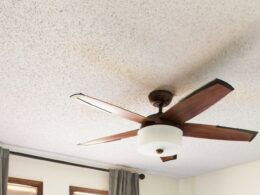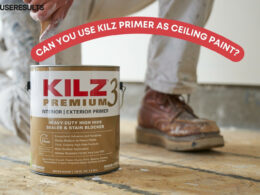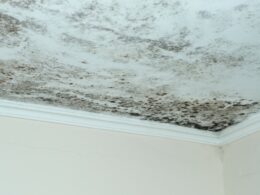Table of Contents Show
As a seasoned homeowner and contractor with extensive experience in various house projects, I understand the importance of choosing the right materials for every job.
Over the years, I’ve had the pleasure of working with numerous clients, each with unique needs and preferences, which has deepened my understanding of home improvement practices.
When it comes to painting your ceiling, the question often arises: Is primer a suitable alternative to ceiling paint?
This is a crucial consideration, especially when you’re looking to achieve a flawless finish and long-lasting results. In this article, we’ll explore the compatibility of primer with ceiling painting tasks, balancing professional insights with practical homeowner tips.
Can You Use Primer For Ceiling Paint?
Yes, you can use primer for ceiling paint, but it’s important to understand the differences and limitations. Primer is designed to prepare surfaces for painting, offering better adhesion and sealing properties. While it can be used on ceilings, especially to cover stains or dark colors, it lacks the specific characteristics of ceiling paint, like a flat finish and enhanced coverage. For optimal results, it’s recommended to use a dedicated ceiling paint over the primer for a more durable and visually appealing finish.
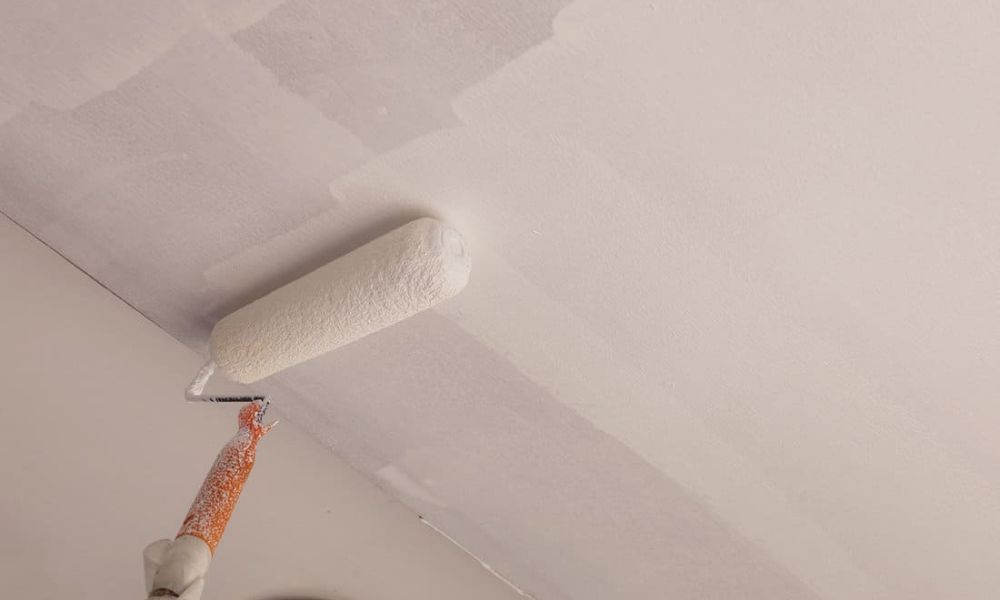
Benefits of Using Primer on Ceilings
1. Adhesion
Primer is excellent for enhancing the adhesion of paint to the ceiling surface. This is particularly important in ensuring that the ceiling paint sticks well and lasts longer. By creating a uniform and sticky surface, primer helps the paint adhere better, reducing the likelihood of peeling or chipping over time.
2. Color Enhancement
Using a primer can significantly enhance the color quality of ceiling paint. It provides a neutral base that allows the true color of the paint to shine through. This is especially useful when applying light-colored paint over a darker surface or when you want to achieve a rich, consistent color across the ceiling.
3. Moisture Barrier
Primer also acts as an effective moisture barrier. This is crucial for ceilings, as they can be prone to moisture issues, especially in bathrooms or kitchens. A good quality primer can help prevent moisture from seeping through, protecting both the paint and the ceiling material from potential water damage.
Challenges of Using Primer as Ceiling Paint
1. Coverage Issues
One of the main challenges of using a primer as ceiling paint is its coverage capability. Primers are typically not formulated to provide the same level of coverage as ceiling paint. They are thinner and designed to seal the surface, not to provide a solid color coat.
This means you might need more coats of primer to achieve the same opacity and uniformity that a single coat of ceiling paint would offer.
2. Durability Concerns
When it comes to longevity, primer falls short compared to ceiling paint. Primers are not made to withstand the test of time as the final coat. They are a preparatory layer, meant to enhance the performance of paint, not replace it.
Over time, a ceiling coated only with primer may show signs of wear, like chipping or discoloration, faster than one painted with proper ceiling paint.
3. Aesthetic Differences
The finish of primer is different from that of ceiling paint. Primers generally have a more matte and less refined finish.
Ceiling paints, on the other hand, are specifically formulated to provide a flat, smooth look that hides imperfections and offers a more appealing aesthetic. Using primer alone may result in a ceiling that lacks the polished appearance typically desired in home interiors.
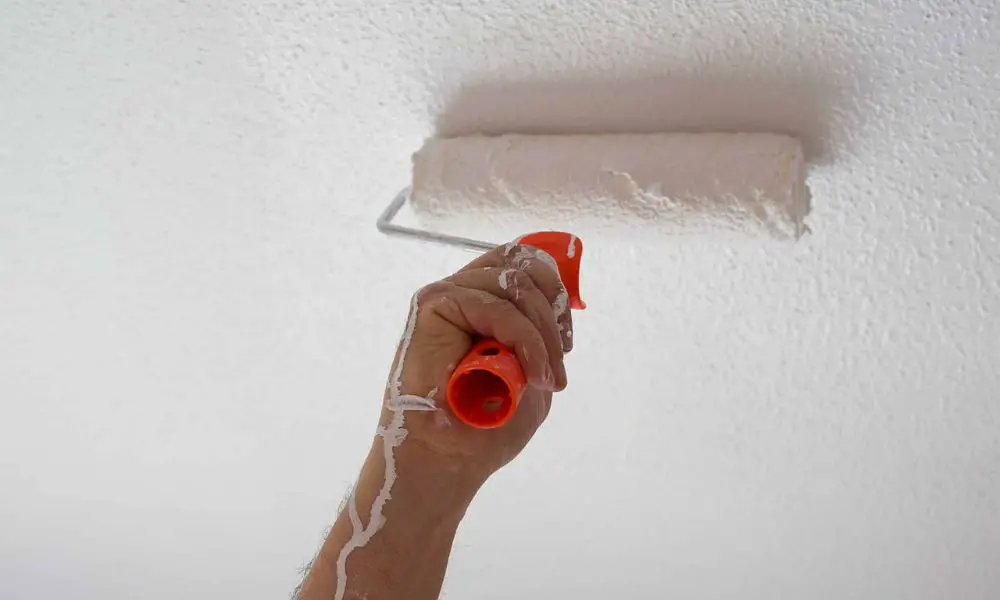
Alternatives to Using Primer as Ceiling Paint
Top Ceiling Paint Brands
For a superior ceiling finish, consider using specialized ceiling paints from reputable brands. Some top recommendations include:
- Behr Premium Plus Interior Ceiling Paint: Known for its excellent coverage and easy application.
- Sherwin-Williams Eminence High-Performance Ceiling Paint: This offers a durable finish and is great for minimizing imperfections.
- Valspar Ceiling Paint + Primer: A combined formula that simplifies the process while delivering quality results.
- These brands provide paints specifically formulated for ceilings, ensuring better coverage, durability, and a visually appealing finish.
Using a Combination of Primer and Paint
There are situations where using both primer and paint is beneficial:
- New or Unfinished Ceilings: Apply a primer first to seal the surface and ensure even paint absorption.
- Dark to Light Color Changes: If you’re painting a lighter color over a dark ceiling, starting with a primer can reduce the number of paint coats needed.
- Stain Coverage: For ceilings with stains or watermarks, a primer can effectively block these before applying the topcoat of paint.
In these cases, the primer acts as a preparatory layer, enhancing the paint’s performance and appearance.









